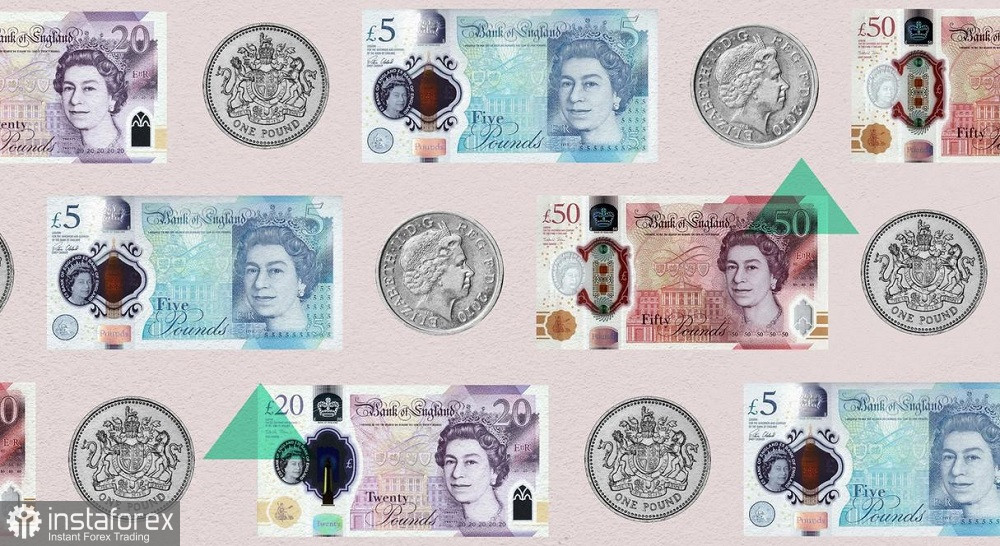The GBP/USD pair opened trading with a confident rise amid a general weakening of the American currency. The U.S. Dollar Index sharply declined at the start of the European session, allowing buyers of the pair to strengthen their positions and approach the resistance level of 1.2650 (at this price point, the Tenkan-sen and Kijun-sen lines on the daily chart coincide). However, the upward momentum waned.

Still, in the current fundamental conditions, it is not advisable to trust the current price fluctuations. Any price movements today are inherently unreliable, as the market is awaiting crucial macroeconomic reports to be published this week. All the attention of dollar bulls is focused on the U.S. Consumer Price Index, scheduled for February 13. The British currency, in turn, is also on the verge of significant tests: starting Tuesday, the pound will react to its own reports. Therefore, ahead are quite eventful and highly volatile days. And that is precisely why today's price fluctuations should not be taken seriously: the main battles are still ahead.
Labor market
On Tuesday, February 13, the UK will publish a report on the labor market. According to preliminary forecasts, the unemployment rate should decrease to 4.0% in December. Over the previous four months, this indicator remained at the same level of 4.2%, although, in each case, experts predicted a downward trend. If unemployment does indeed decrease this time, the pound will receive some support. However, it is worth acknowledging that this indicator is quite lagging, while more prompt indicators may not favor the pound.
For example, the indicator of the increase in the number of claims for unemployment benefits is expected to reach 15,000 (the maximum since June of last year), after an increase of 11,000 in the previous month. Wages may also not be in favor of the pound. Excluding bonuses, the level of average earnings has shown a downward trend for three months, and December may be the fourth month in this series. According to forecasts, the indicator will drop to 6.0%. With the inclusion of bonuses, the wage indicator is also consistently falling: if in July 2023, the indicator was at 8.5%, in November, it reached 6.5%. In December, the indicator is expected to reach 5.6%.
Inflation
On the next day, February 14, key inflation data will be published in the UK. The overall Consumer Price Index for three months (from July to September inclusive) was at 6.7%, then sharply declined in October (to 4.6%) and continued to decrease in November (3.9%). However, in December, it unexpectedly accelerated to 4.0%. According to the majority of experts, in January, the overall inflation will again demonstrate acceleration up to 4.1%.
The core Consumer Price Index, excluding energy and food prices, is expected to demonstrate a similar trajectory, accelerating to 5.2%.
The Retail Price Index may also see a slight increase, reaching 5.3% YoY, following two months of stagnation at 5.2%.
Gross Domestic Product (GDP)
On Thursday, February 15, a crucial block of macroeconomic statistics will be published. Specifically, we will learn about the growth rates of the British economy for the fourth quarter of 2023. According to forecasts, the quarterly GDP growth rate of the country is expected to contract by 0.1%, while on an annual basis, it is projected to increase by 0.5%. The December economic growth rates may be disappointing (-0.2% QoQ, -0.1% YoY). Additionally, a contraction in industrial production volume is expected in December (-0.1% MoM, -0.2% YoY). The volume of manufacturing production is expected to decline by 0.2% on a monthly basis and rise by 1.1% annually (after a 1.3% increase in November).
Conclusion
What do the stated figures suggest? Firstly, the Bank of England will likely maintain a wait-and-see position in the foreseeable future. Following the January meeting, the English regulator excluded the phrase about the possible further tightening of monetary policy from the accompanying statement. However, the prospects of lowering interest rates remain uncertain. Last week, a representative of the Bank of England, Sarah Breeden, stated that the regulator had shifted from tightening monetary policy to contemplating when it could be lowered. A necessary condition for this is further inflation slowdown. This suggests that the growth of the British CPI in January may weaken the degree of "dovish" expectations and strengthen the positions of GBP/USD buyers.
It is also worth recalling that during the final press conference, the head of the central bank, Andrew Bailey, supported the idea of keeping the rate at the current level "for an extended period" - until there is confidence that inflation will decrease to the target two percent level. According to him, the duration of the restrictive interest rate "will be determined based on incoming data."
Thus, the macroeconomic releases in the coming days (primarily related to inflation) may bring forward or delay the date of the first round of interest rate cuts by the Bank of England. Considering the significance of these reports, it is currently advisable to maintain a wait-and-see position for the GBP/USD pair. The situation is in a delicate balance: the scales can tilt in favor of the pound or against it.
 English
English 
 Русский
Русский Bahasa Indonesia
Bahasa Indonesia Bahasa Malay
Bahasa Malay ไทย
ไทย Español
Español Deutsch
Deutsch Български
Български Français
Français Tiếng Việt
Tiếng Việt 中文
中文 বাংলা
বাংলা हिन्दी
हिन्दी Čeština
Čeština Українська
Українська Română
Română

